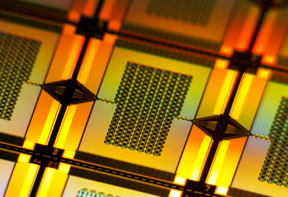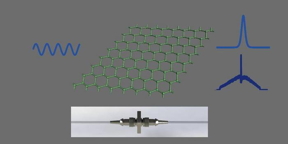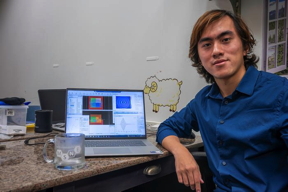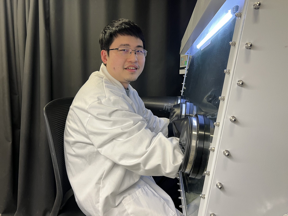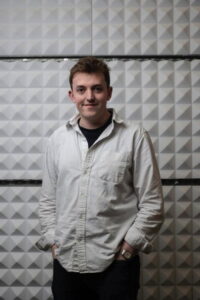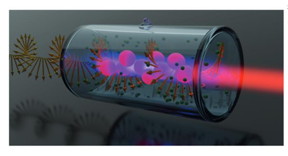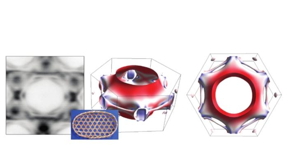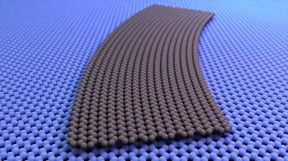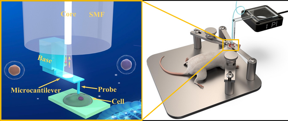Home > Press > Dawn of solid-state quantum networks: Researchers demonstrated high-visibility quantum interference between two independent semiconductor quantum dots — an important step toward scalable quantum networks
| Experimental configuration of quantum interference between two independent solid-state QD single-photon sources separated by 302 km fiber. DM: dichromatic mirror, LP: long pass, BP: band pass, BS: beam splitter, SNSPD: superconducting nanowire single- photon detector, HWP: half-wave plate, QWP: quarter-wave plate, PBS: polarization beam splitter. CREDIT You et al., doi 10.1117/1.AP.4.6.066003 |
Abstract:
This year’s Nobel Prize in Physics celebrated the fundamental interest of quantum entanglement, and also envisioned the potential applications in “the second quantum revolution” — a new age when we are able to manipulate the weirdness of quantum mechanics, including quantum superposition and entanglement. A large-scale and fully functional quantum network is the holy grail of quantum information sciences. It will open a new frontier of physics, with new possibilities for quantum computation, communication, and metrology.
Dawn of solid-state quantum networks: Researchers demonstrated high-visibility quantum interference between two independent semiconductor quantum dots — an important step toward scalable quantum networks
Bellingham, WA | Posted on January 6th, 2023
One of the most significant challenges is to extend the distance of quantum communication to a practically useful scale. Unlike classical signals that can be noiselessly amplified, quantum states in superposition cannot be amplified because they cannot be perfectly cloned. Therefore, a high-performance quantum network requires not only ultra-low-loss quantum channels and quantum memory, but also high-performance quantum light sources. There has been exciting recent progress in satellite-based quantum communications and quantum repeaters, but a lack of suitable single-photon sources has hampered further advances.
What is required of a single-photon source for quantum network applications? First, it should emit one (only one) photon at a time. Second, to attain brightness, the single-photon sources should have high system efficiency and a high repetition rate. Third, for applications such as in quantum teleportation that require interfering with independent photons, the single photons should be indistinguishable. Additional requirements include a scalable platform, tunable and narrowband linewidth (favorable for temporal synchronization), and interconnectivity with matter qubits.
A promising source is quantum dots (QDs), semiconductor particles of just a few nanometers. However, in the past two decades, the visibility of quantum interference between independent QDs has rarely exceeded the classical limit of 50% and distances have been limited to around a few meters or kilometers.
As reported in Advanced Photonics, an international team of researchers has achieved high-visibility quantum interference between two independent QDs linked with ~300 km optical fibers. They report efficient and indistinguishable single-photon sources with ultra-low-noise, tunable single-photon frequency conversion, and low-dispersion long fiber transmission. The single photons are generated from resonantly driven single QDs deterministically coupled to microcavities. Quantum frequency conversions are used to eliminate the QD inhomogeneity and shift the emission wavelength to the telecommunications band. The observed interference visibility is up to 93%. According to senior author Chao-Yang Lu, professor at the University of Science and Technology of China (USTC), “Feasible improvements can further extend the distance to ~600 km.”
Lu remarks, “Our work jumped from the previous QD-based quantum experiments at a scale from ~1 km to 300 km, two orders of magnitude larger, and thus opens an exciting prospect of solid-state quantum networks.” With this reported jump, the dawn of solid-state quantum networks may soon begin breaking toward day.
####
For more information, please click here
Contacts:
Daneet Steffens
SPIE–International Society for Optics and Photonics
Office: 360-685-5478
Copyright © SPIE–International Society for Optics and Photonics
If you have a comment, please Contact us.
Issuers of news releases, not 7th Wave, Inc. or Nanotechnology Now, are solely responsible for the accuracy of the content.
| Related Links |
| Related News Press |
News and information
![]() Electricity harvesting from evaporation, raindrops and moisture inspired by nature January 6th, 2023
Electricity harvesting from evaporation, raindrops and moisture inspired by nature January 6th, 2023
![]() Lithium-sulfur batteries are one step closer to powering the future January 6th, 2023
Lithium-sulfur batteries are one step closer to powering the future January 6th, 2023
![]() Wafer-scale 2D MoTe₂ layers enable highly-sensitive broadband integrated infrared detector January 6th, 2023
Wafer-scale 2D MoTe₂ layers enable highly-sensitive broadband integrated infrared detector January 6th, 2023
Quantum chemistry
![]() New X-ray imaging technique to study the transient phases of quantum materials December 29th, 2022
New X-ray imaging technique to study the transient phases of quantum materials December 29th, 2022
Quantum communication
![]() New X-ray imaging technique to study the transient phases of quantum materials December 29th, 2022
New X-ray imaging technique to study the transient phases of quantum materials December 29th, 2022
Quantum Physics
![]() New X-ray imaging technique to study the transient phases of quantum materials December 29th, 2022
New X-ray imaging technique to study the transient phases of quantum materials December 29th, 2022
![]() Quantum receiver enhanced by adaptive learning December 9th, 2022
Quantum receiver enhanced by adaptive learning December 9th, 2022
![]() NIST’s grid of quantum islands could reveal secrets for powerful technologies November 18th, 2022
NIST’s grid of quantum islands could reveal secrets for powerful technologies November 18th, 2022
Possible Futures
![]() Development of bio-friendly transparent temperature sensor technology that precisely measures temperature changes by light January 6th, 2023
Development of bio-friendly transparent temperature sensor technology that precisely measures temperature changes by light January 6th, 2023
![]() Dual-site collaboration boosts electrochemical nitrogen reduction on Ru-S-C single-atom catalyst January 6th, 2023
Dual-site collaboration boosts electrochemical nitrogen reduction on Ru-S-C single-atom catalyst January 6th, 2023
![]() New nanowire sensors are the next step in the Internet of Things January 6th, 2023
New nanowire sensors are the next step in the Internet of Things January 6th, 2023
Quantum Computing
![]() New X-ray imaging technique to study the transient phases of quantum materials December 29th, 2022
New X-ray imaging technique to study the transient phases of quantum materials December 29th, 2022
![]() Quantum receiver enhanced by adaptive learning December 9th, 2022
Quantum receiver enhanced by adaptive learning December 9th, 2022
![]() NIST’s grid of quantum islands could reveal secrets for powerful technologies November 18th, 2022
NIST’s grid of quantum islands could reveal secrets for powerful technologies November 18th, 2022
Discoveries
![]() Electricity harvesting from evaporation, raindrops and moisture inspired by nature January 6th, 2023
Electricity harvesting from evaporation, raindrops and moisture inspired by nature January 6th, 2023
![]() Lithium-sulfur batteries are one step closer to powering the future January 6th, 2023
Lithium-sulfur batteries are one step closer to powering the future January 6th, 2023
![]() Wafer-scale 2D MoTe₂ layers enable highly-sensitive broadband integrated infrared detector January 6th, 2023
Wafer-scale 2D MoTe₂ layers enable highly-sensitive broadband integrated infrared detector January 6th, 2023
Announcements
![]() Electricity harvesting from evaporation, raindrops and moisture inspired by nature January 6th, 2023
Electricity harvesting from evaporation, raindrops and moisture inspired by nature January 6th, 2023
![]() Lithium-sulfur batteries are one step closer to powering the future January 6th, 2023
Lithium-sulfur batteries are one step closer to powering the future January 6th, 2023
![]() Wafer-scale 2D MoTe₂ layers enable highly-sensitive broadband integrated infrared detector January 6th, 2023
Wafer-scale 2D MoTe₂ layers enable highly-sensitive broadband integrated infrared detector January 6th, 2023
Interviews/Book Reviews/Essays/Reports/Podcasts/Journals/White papers/Posters
![]() Electricity harvesting from evaporation, raindrops and moisture inspired by nature January 6th, 2023
Electricity harvesting from evaporation, raindrops and moisture inspired by nature January 6th, 2023
![]() Lithium-sulfur batteries are one step closer to powering the future January 6th, 2023
Lithium-sulfur batteries are one step closer to powering the future January 6th, 2023
![]() Wafer-scale 2D MoTe₂ layers enable highly-sensitive broadband integrated infrared detector January 6th, 2023
Wafer-scale 2D MoTe₂ layers enable highly-sensitive broadband integrated infrared detector January 6th, 2023
Quantum nanoscience
![]() New X-ray imaging technique to study the transient phases of quantum materials December 29th, 2022
New X-ray imaging technique to study the transient phases of quantum materials December 29th, 2022
![]() Upgrading your computer to quantum September 23rd, 2022
Upgrading your computer to quantum September 23rd, 2022
![]() Key element for a scalable quantum computer: Physicists from Forschungszentrum Jülich and RWTH Aachen University demonstrate electron transport on a quantum chip September 23rd, 2022
Key element for a scalable quantum computer: Physicists from Forschungszentrum Jülich and RWTH Aachen University demonstrate electron transport on a quantum chip September 23rd, 2022
![]() Lattice distortion of perovskite quantum dots induces coherent quantum beating September 9th, 2022
Lattice distortion of perovskite quantum dots induces coherent quantum beating September 9th, 2022
- SEO Powered Content & PR Distribution. Get Amplified Today.
- Platoblockchain. Web3 Metaverse Intelligence. Knowledge Amplified. Access Here.
- Source: http://www.nanotech-now.com/news.cgi?story_id=57274
- 10
- 2D
- a
- Able
- According
- accuracy
- achieved
- Additional
- advanced
- advances
- and
- applications
- architecture
- around
- author
- BAND
- batteries
- Beam
- because
- between
- boundaries
- BP
- Breaking
- broadband
- called
- cannot
- celebrated
- Center
- CGI
- challenges
- Changes
- channels
- Chao-Yang Lu
- China
- closer
- COHERENT
- collaboration
- COM
- comment
- Communication
- Communications
- computation
- computer
- computing
- Configuration
- Connect
- content
- Conversion
- conversions
- could
- coupled
- credit
- day
- decades
- December
- demonstrate
- demonstrated
- Devices
- distance
- DM
- driven
- efficiency
- efficient
- eliminate
- emission
- enable
- enhanced
- Ether (ETH)
- exciting
- experiment
- explained
- extend
- few
- fibers
- First
- Frequency
- from
- Frontier
- fully
- functional
- fundamental
- further
- generated
- gif
- Grail
- Grid
- Harvesting
- High
- high-performance
- However
- HTTPS
- Imaging
- important
- improvements
- in
- Inc.
- include
- Including
- independent
- information
- inspired
- integrated
- interest
- interfering
- International
- Internet
- Islands
- IT
- January
- jump
- Lack
- large-scale
- larger
- layers
- light
- LIMIT
- Limited
- linked
- links
- Long
- LP
- make
- material
- Matter
- measures
- mechanics
- Memory
- Metrology
- mirror
- more
- most
- nanotechnology
- net
- network
- networks
- New
- news
- next
- nobel prize
- novel
- November
- ONE
- open
- opens
- optics
- orders
- Other
- past
- PBS
- phenomenon
- Photons
- PHP
- Physics
- platform
- plato
- Plato Data Intelligence
- PlatoData
- please
- possibilities
- Post
- posted
- potential
- powerful
- Powering
- practically
- precisely
- previous
- prize
- Professor
- Progress
- promising
- properties
- prospect
- Quantum
- Quantum Computer
- quantum computing
- Quantum dots
- quantum entanglement
- Quantum Frequency
- quantum information
- Quantum Mechanics
- quantum networks
- quantum superposition
- qubits
- Rate
- recent
- relatively
- Releases
- report
- Reported
- require
- required
- Requirements
- requires
- researchers
- responsible
- return
- reveal
- Save
- scalable
- Scale
- Science
- Science and Technology
- SCIENCES
- Search
- Second
- semiconductor
- senior
- sensors
- September
- Share
- shift
- should
- signals
- significant
- single
- Society
- Soon
- Source
- Sources
- start
- States
- Step
- strong
- Study
- submit
- such
- suitable
- superposition
- synchronization
- system
- team
- Technology
- telecommunications
- The
- therefore
- Third
- time
- to
- topological quantum
- toward
- transparent
- transport
- understanding
- university
- University of Science and Technology of China
- us
- USTC
- visibility
- Wave
- will
- Work
- x-ray
- Yahoo
- Your
- zephyrnet


